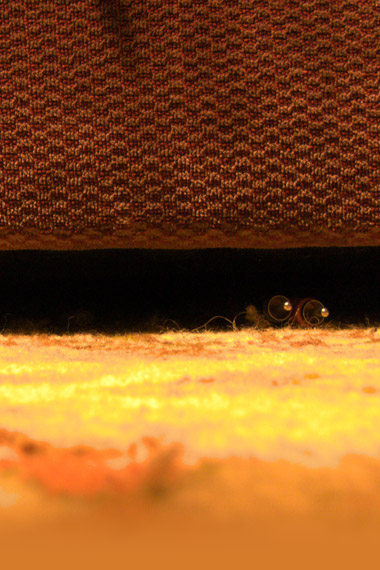

The way John (Chequerboard) used his recording of
the gallery, which was a space which held some emotional resonance
with him, led me to think about how sound can be used to document
spaces or objects which have some emotional connection to the person
recording them.
Such recordings do not always necessarily convey these emotions to a third party
listener. Sound is recorded without the emotional coloration felt by the person
who recorded them. It is an objective documentation, whose emotional resonances
are felt by those with whom they hold some significant connection.

I think John highlighted this by adding a more ‘musical’ element
to his piece which suggests to the listener that the preceding sounds were of
some emotional relevance to him. While a recording of an object or space can
tell us so much about its physical attributes (size, mass, density, texture etc.)
it does not necessarily describe the emotional significance it holds with the
person recording them. It can of course, trigger an emotional response in the
listener, which may be relevant to their own experiences, which may or may not
correlate directly with the original source.

For example, a recording of an empty building might remind a listener of a time
when they got lost in an empty building when they were young, or a recording
of waves crashing against rocks might trigger memories of time spent by the sea
with a loved one.
A lot of my own work tries to explore how these recordings can be used to suggest
a particular emotion, or at least lead the listener in a particular direction
with regards their emotional response to them. Processing, or manipulation of
the sounds, is one way by which the listener can be ‘manipulated’ towards
a particular response. Context is another method by which the composer can suggest
a particular emotional environment, in which the listener may be placed.
For example, a recording of a buzzing fly set against some birdsong might suggest
a summery atmosphere of calm and relaxation, while the same buzzing fly recording
with some reverb applied, set against some creaking, tapping sounds, might trigger
a more fearful or ominous response.
My own piece attempts to describe an exaggerated sonic portrait, or caricature,
of my own empty house while I am sleeping. Playing on the old question of “if
a tree falls in the forest…”, I tried to imagine what the house,
and various objects in it, (ornaments, cutlery, clocks, the ticking of an alarm
sensor) might sound like if it could hear itself as I slept. I imagined these
sounds to be completely different to what I might hear were I to be awake listening
to it.

When I was a child, I always associated sounds I could hear while going asleep
with something completely different to what they actually were. The water gurgling
in the pipes became rushing rivers and the sound of the blood pumping in my ears
I imagined to be big, clanking factories where hundreds of tiny insect slaves
marched to and fro. Stories about how things in a house might come alive as its
inhabitants slept always struck a chord with me too.

The piece is an extension of this idea, whereby there is another layer
of hidden sonic activity going on just beyond our consciousness. Towards
the end of the piece, as I approach waking, the sounds slowly become a
more ‘real world’ representation
of the house, as if it senses my conscious presence and is afraid of letting
me in on its secrets.
Jimmy Behan / July 2008

|




